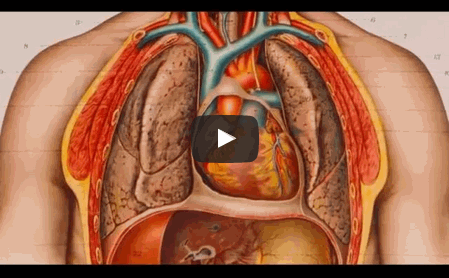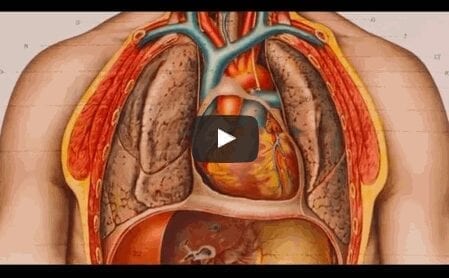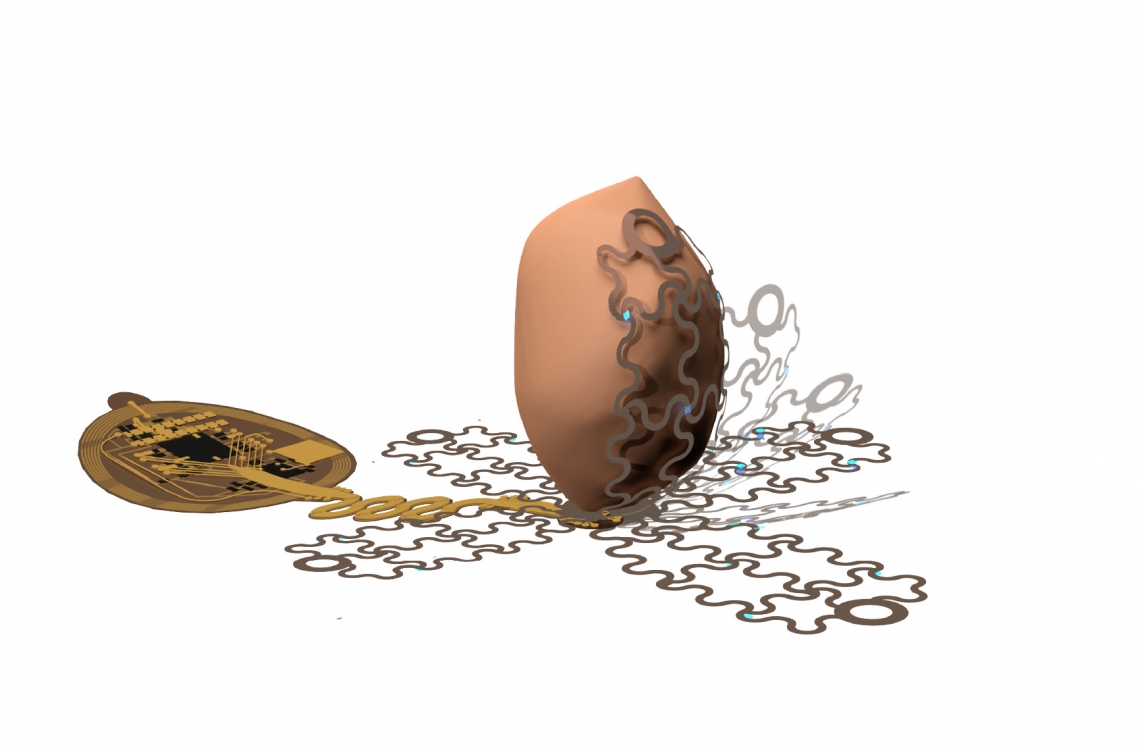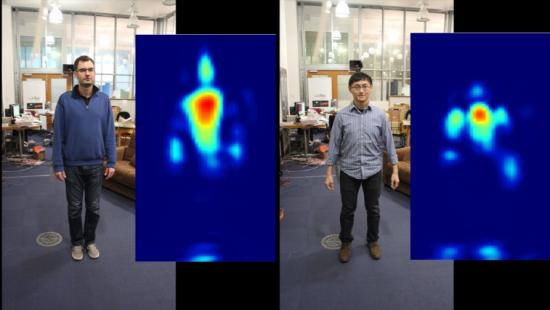
The implantable pacemaker, a medical marvel that has extended millions of lives since its invention nearly 60 years ago, is getting a 21st century makeover.
First came a wireless version; these pacemakers, which are AAA battery-sized and placed inside the heart via a catheter through the leg, are being tested in humans in the United States, Canada and Australia.
Now, researchers are developing technology to make these devices battery-free. The advancement is based upon a piezoelectric system that converts vibrational energy – created inside the chest by each heartbeat – into electricity to power the pacemaker.
“Essentially, we’re creating technology that will allow pacemakers to be powered by the very heart that they are regulating,” says M. Amin Karami, PhD, assistant professor of mechanical engineering at the University at Buffalo School of Engineering and Applied Sciences, who is leading the research.
The technology may eliminate the medical risks, costs and inconvenience of having a battery replacement every five to 12 years for millions of people worldwide.
From the beginning
The development of pacemakers dates back nearly a century. At the beginning, most efforts focused on devices that patients would carry outside their body.
Surgeons first successfully implanted a pacemaker in a human in 1960 in Buffalo, New York. The device, invented by UB alumnus Wilson Greatbatch, enabled the patient to survive another 18 months. (Note: A patient in Sweden received an implantable pacemaker in 1958, but the device failed after three hours.)
While there have been advancements since 1960 – the devices are smaller, the batteries last longer, there are even “smart” pacemakers that are linked to computers – the basic design from Greatbatch is the same. About the size of a pocket watch, pacemakers are implanted under the skin through an incision in the chest. Wires, also called leads, connect the device to the heart and deliver electrical signals that regulate the heart’s activity.
The new wireless option does not require leads because it rests inside the heart. This removes a potential point of failure, but the device still relies on a battery that must be replaced as often as the batteries that conventional pacemakers use.
A state of constant motion
The idea of heart-powered pacemakers came to Karami after doing PhD work on piezoelectric applications for unmanned aerial vehicles and bridges. He wanted to apply that knowledge to the human body. The heart was an obvious choice because of its relative strength and constant motion.
“To see the heart in motion – even an animation – is to be awestruck,” says Karami. “It moves significantly. In turn, that movement creates energy that we’re just now figuring out how to harvest.”
Read more: Next-gen pacemakers may be powered by unlikely source: the heart
The Latest on: Pacemaker
[google_news title=”” keyword=”pacemaker” num_posts=”10″ blurb_length=”0″ show_thumb=”left”]
via Google News
The Latest on: Pacemaker
- King Harald of Norway is back at work after pacemaker surgerieson April 25, 2024 at 5:21 pm
Following two surgeries to implant pacemakers Europe oldest monarch King Harald V of Norway returned to work on Monday after an extended sick leave ...
- Beware What You Wear With Your Pacemaker or ICDon April 25, 2024 at 5:00 pm
Relatively weak magnets in consumer products have always posed some risk, usually very low, to the function of pacemakers and implantable cardioverter-defibrillators (ICDs). However, stronger ...
- After pacemaker surgeries, King Harald of Norway is back at workon April 25, 2024 at 1:02 pm
Following two surgeries to implant pacemakers, Europe's oldest monarch, King Harald V of Norway, returned to work on Monday after an extended sick leave ...
- Pacemaker capacitor breakthrough promises 300+ years of life-saving poweron April 24, 2024 at 5:00 pm
If the heart rhythm is off, the pacemaker delivers a surge of electricity to bring the heart back into rhythm. The pacemaker takes effort into account and delivers faster pulses when needed. For ...
- Identity Pacemaker from St. Jude Medicalon April 23, 2024 at 5:00 pm
The Identity pacemaker models 5370 and 5376 feature AF management, a suite of therapeutic and diagnostic capabilities designed to manage pacemaker patients suffering from AF. This tool kit includes: ...
- Permanent Pacemaker Implantation Following Cardiac Surgery: Indications and Long-Term Follow-Upon April 23, 2024 at 5:00 pm
Background: Conduction disturbances requiring permanent pacemaker implantation after heart surgery occur in about 1.5% of patients. Early pacemaker implantation may reduce morbidity and ...
- Norway’s King Harald, Europe’s oldest monarch, is back at work after pacemaker implantson April 22, 2024 at 3:33 am
Europe’s oldest monarch, King Harald V of Norway, is resuming work after a long sick leave that followed two pacemaker implants.
- Vagal-nerve pacemaker implanted for first time into ten-month old epilepsy patienton April 22, 2024 at 2:27 am
The device is designed to help those with drug-resistant epilepsy, where traditional treatments fail to control seizures. Pediatric neurosurgery department head Dr. Sergey Abeshaus said that the best ...
- Derbyshire pacemaker runner aims to set marathon recordon April 18, 2024 at 10:05 pm
A Derbyshire man hopes to set the first record for running the London Marathon with a heart pacemaker fitted. Dr David Black, 61, said he had been called both "inspirational" and "stupid" but said ...
- Pacemaker or competitor? Beijing half marathon under probe as Chinese star handed a winon April 16, 2024 at 6:13 pm
Chinese long-distance runner He Jie is at the center of a controversy over his win in the Beijing Half Marathon, as organizers started a probe after a trio of African runners appeared to deliberately ...
via Bing News











